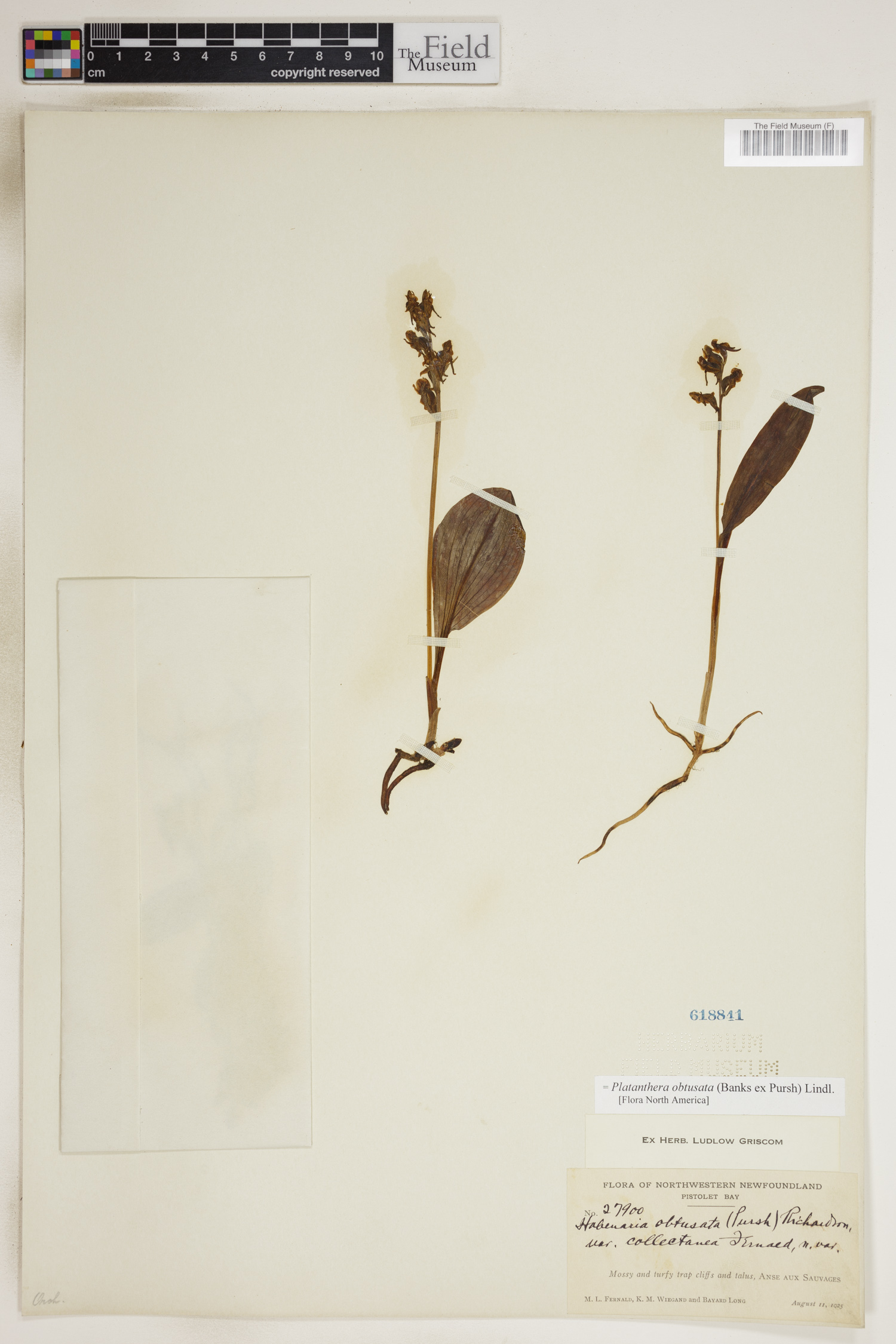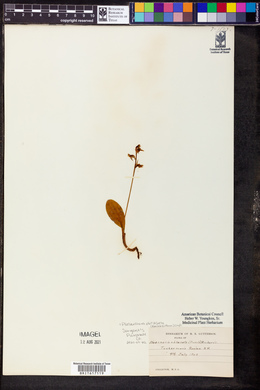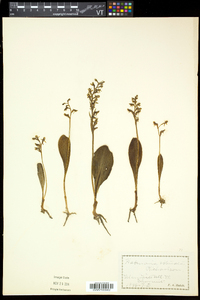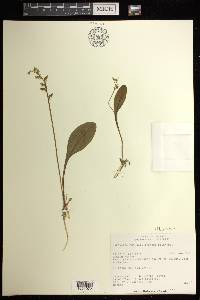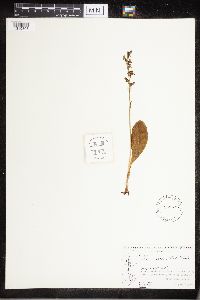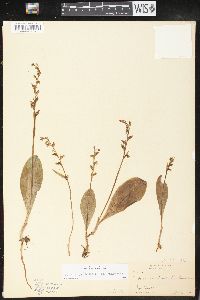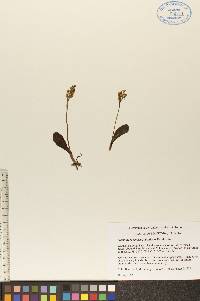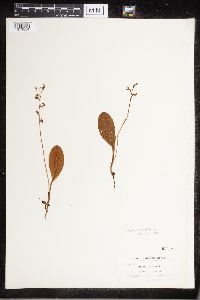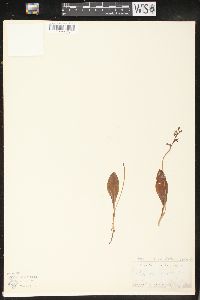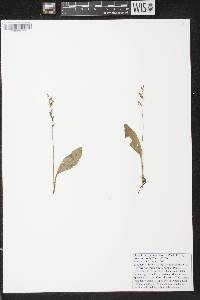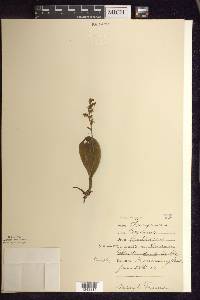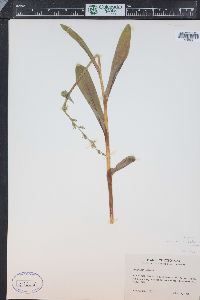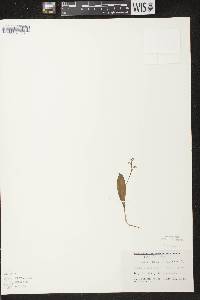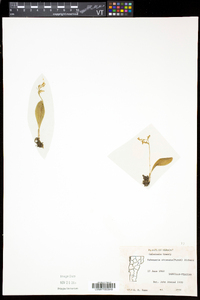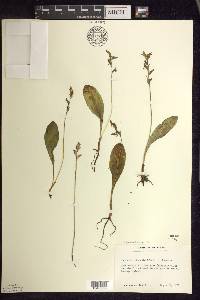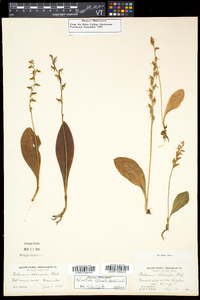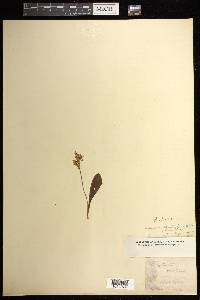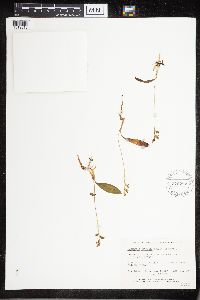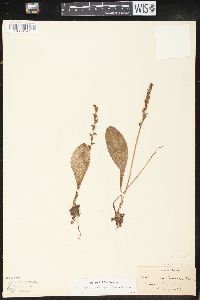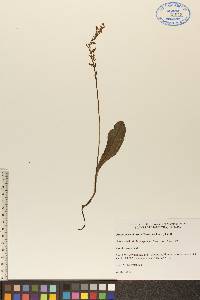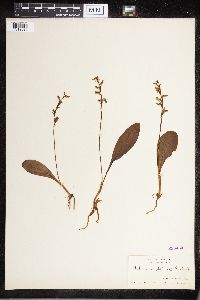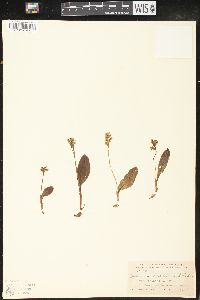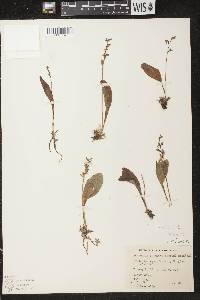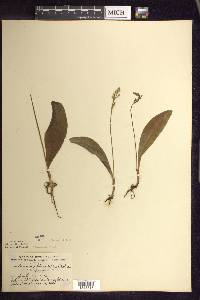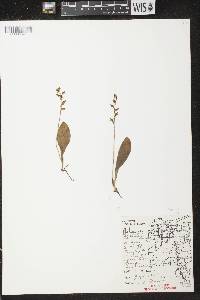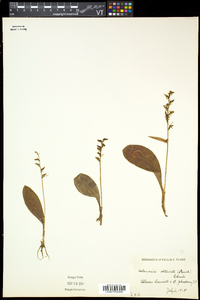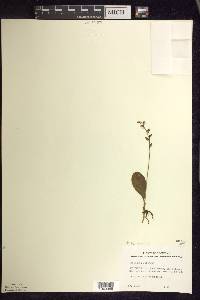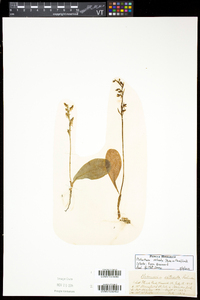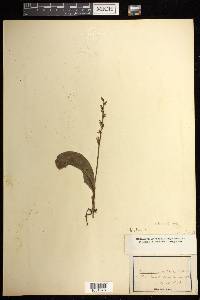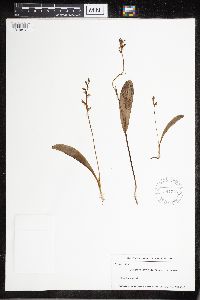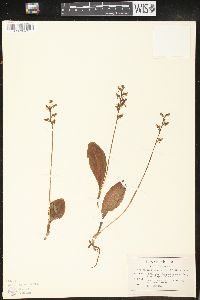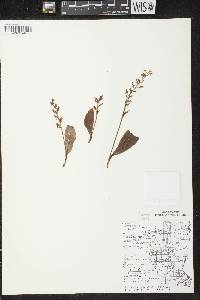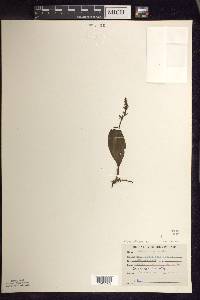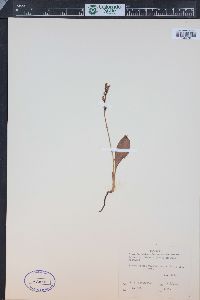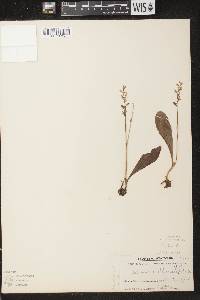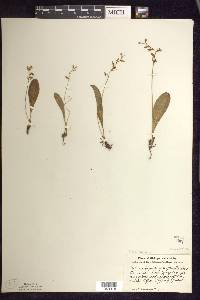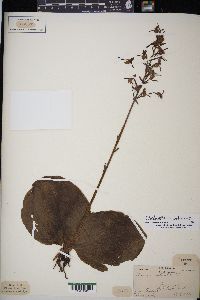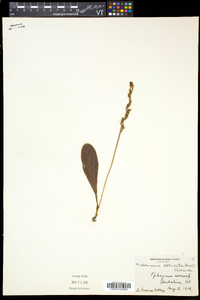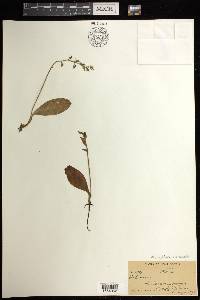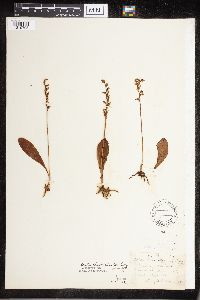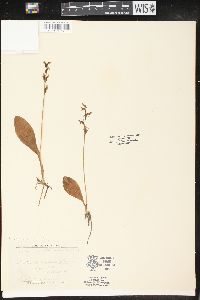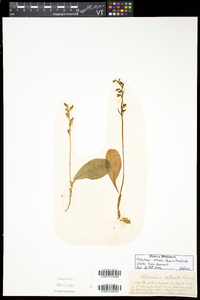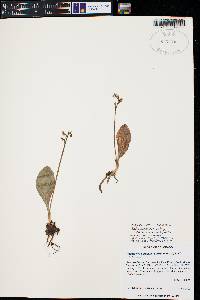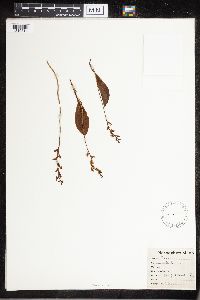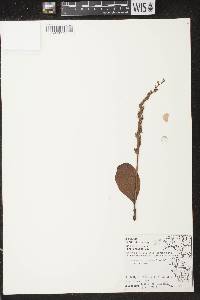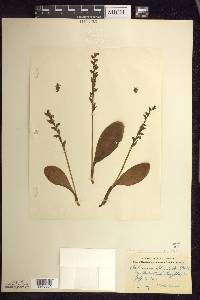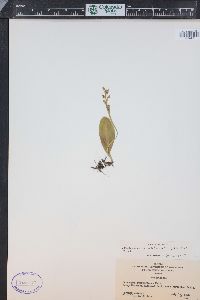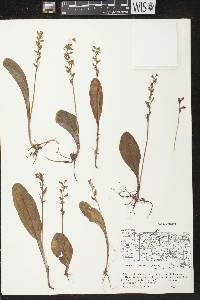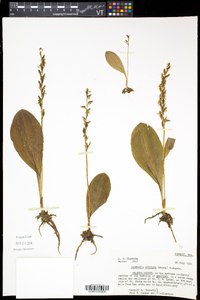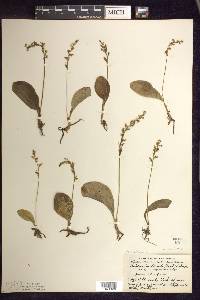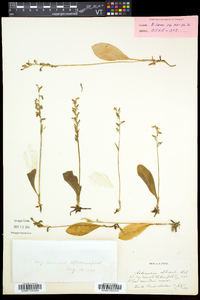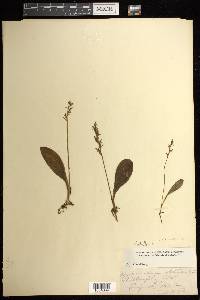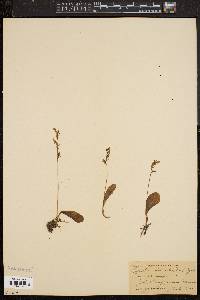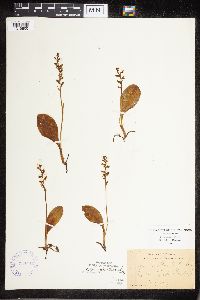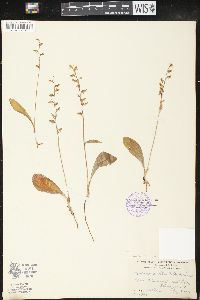Platanthera obtusata
|
|
|
|
Family: Orchidaceae
Blunt-Leaf Orchid
[Habenaria obtusata (Banks ex Pursh) Richardson, moreHabenaria obtusata var. collectanea Fernald, Platanthera obtusata var. collectanea (Fernald) W.J.Schrenk] |
Plants 5.5-35 cm. Leaves 1(-2, rarely), spreading-ascending on base of stem; bracts 0(-1, rarely); blade linear-oblanceolate, elliptic, or broadly obovate, 3.5-15 × 0.8-5 cm. Spikes lax. Flowers resupinate, not showy, greenish white to yellowish green; corolla commonly whiter than calyx; lateral sepals reflexed; petals rhombic, lanceolate-falcate, margins entire; lip descending, linear, narrowly lance-rhombic, or linear-hastate, with median basal thickening, unlobed, 2.5-8(-10) × less than 1-2 mm, margins entire; spur slenderly conic, 3-8(-10) mm; rostellum lobes directed forward, wide-spreading, rounded-angular; pollinaria straight; pollinia remaining enclosed in anther sacs; viscidia orbiculate; ovary rather slender to stout, mostly 3-10 mm. 2n = 42, 63 (American, as Habenaria obtusata), 126 (Eurasian, as Habenaria obtusata). Flowering Jun--Aug. Mesic to wet coniferous forest, forested fens, sphagnum bogs, stream banks, tundra, moist roadsides; 0--3500 m; Alta., B.C., Man., N.B., Nfld. and Labr., N.W.T., N.S., Nunavut, Ont., P.E.I., Que., Sask., Yukon; Alaska, Colo., Idaho, Maine, Mass., Mich., Minn., Mont., N.H., N.Y., Oreg., Utah, Vt., Wash., Wis., Wyo.; Eurasia [Platanthera obtusata subsp. oligantha]. The rare Eurasian Platanthera obtusata subsp. oligantha (Turczaninow) Hultén differs from the North American subsp. obtusata in its smaller dimensions and rhombic-lanceolate lip. It is also said to be densely few-flowered, although some Siberian material is comparable to American plants. Supposedly intermediate plants are reported from Alaska, and much material from that area is reduced in stature and with smaller flowers than typical of American plants. In most cases, however, lips are relatively slender, and the plants seem merely to be stunted by their environment. One or two collections from the Alaskan Peninsula and Aleutians, however, seem entirely referable to subsp. oligantha with dense, few-flowered inflorescences of very small flowers with rhombic-lanceolate lips and shorter curved spurs. Eurasian plants are reported to be hexaploid or perhaps sometimes triploid, and if the apparent ploidy differences delimit the taxa, then it should be possible to unequivocally identify Alaskan plants.
Scape slender, 1-3 dm, from a slender rhizome, usually bractless; lf solitary, basal, ascending, persistent through anthesis, oblanceolate to obovate, 5-13 נ1-4 cm, blunt, long-tapering to a petiole-like base; infl 2-10 cm; fls few, short- pediceled, greenish-white; lip deflexed, 5-9 mm, lanceolate; lateral pet dilated below the middle, directed obliquely upward to the margins of the upper sep; lateral sep widely spreading; spur 5-9 mm, tapering to the tip; 2n=42. Moist woods and bogs, especially under evergreens; circumboreal, in Amer. s. to Mass., N.Y., Mich., Minn., and Colo. June-Aug. (Lysiella o.; Platanthera o.) Gleason, Henry A. & Cronquist, Arthur J. 1991. Manual of vascular plants of northeastern United States and adjacent Canada. lxxv + 910 pp. ©The New York Botanical Garden. All rights reserved. Used by permission. |

